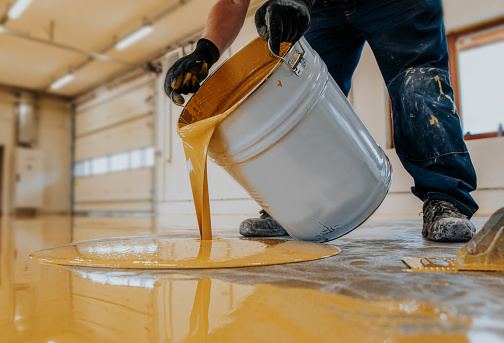Electrocoat Stripper and Its Role in Parts Stripping

In the realm of industrial manufacturing and automotive refurbishment, electrocoat stripper plays a pivotal role in the process of parts stripping. This essential chemical solution is designed to efficiently remove old or unwanted electrocoatings from various metal parts, ensuring they can be refurbished or repurposed effectively. Understanding its function, application, and benefits is crucial for industries relying on precision and efficiency in parts reconditioning.
Understanding Electrocoat Stripping
Electrocoat stripping involves the removal of electrodeposited coatings, typically applied to automotive components, metal structures, and machinery parts. These coatings are intended to provide corrosion resistance, enhance aesthetics, or improve functional properties. Over time, however, these coatings may degrade, become damaged, or require replacement due to changes in design or performance requirements.
Parts stripping with an electrocoat stripper aims to restore components to their original state or prepare them for a new coating application. The process is meticulous, requiring a balance between effectiveness and safety to ensure that the base metal remains undamaged while removing the existing coating completely.
The Process of Parts Stripping
The parts stripping process begins with the selection of an appropriate electrocoat stripper formulation. Factors such as the type of substrate metal, the thickness and composition of the existing coating, and environmental considerations influence the choice of stripper.
Once selected, the electrocoat stripper is applied through immersion, spray, or brush application methods. The chemical formulation works by breaking down the molecular bonds of the coating, allowing it to be lifted from the metal substrate without causing damage. Temperature, concentration, and dwell time are critical parameters controlled during the stripping process to achieve optimal results.
Key Considerations in Electrocoat Stripping
- Chemical Formulation: Electrocoat strippers are formulated based on the type of coating to be removed and the substrate metal. Common formulations include alkaline, acid-based, or solvent-based solutions tailored to specific applications.
- Environmental Impact: Increasingly, there is a focus on developing eco-friendly electrocoat strippers that minimize hazardous waste and comply with environmental regulations. Water-based or low-VOC (Volatile Organic Compound) formulations are preferred in many industrial settings.
- Efficiency and Effectiveness: The effectiveness of an electrocoat stripper is measured by its ability to remove coatings uniformly across complex geometries without leaving residues or damaging the substrate. Efficiency metrics include stripping rate, bath life, and overall process time.
Applications of Electrocoat Strippers
Electrocoat stripping finds extensive application in industries such as automotive manufacturing, aerospace, electronics, and metal fabrication. In automotive refurbishment, for instance, old parts can be stripped of their worn coatings, allowing for cost-effective reconditioning and re-use. Aerospace components benefit from the precision and reliability of electrocoat stripping to maintain stringent performance standards.
Advantages of Using Electrocoat Strippers
- Precision: Electrocoat strippers are highly precise, targeting only the coating layer without affecting the underlying metal substrate.
- Cost Efficiency: By extending the life of metal parts through efficient stripping and re-coating, industries save on replacement costs and reduce waste.
- Quality Assurance: Consistent stripping results ensure that re-coated parts meet performance and aesthetic standards required by end-users.
Future Trends in Parts Stripping Technologies
As industries evolve, so do the technologies and methodologies involved in parts stripping. Future advancements may focus on:
- Automation: Integration of robotics and automated systems to enhance process control and efficiency.
- Smart Formulations: Development of intelligent electrocoat stripper that adapt to varying environmental conditions and substrates.
- Sustainability: Continued emphasis on sustainable practices through the use of biodegradable and environmentally benign stripping formulations.
Conclusion
In conclusion, electrocoat stripping with the aid of specialized electrocoat strippers is a critical process in parts reconditioning across diverse industrial sectors. By leveraging advanced chemical formulations and precise application techniques, industries can achieve efficient parts stripping while maintaining high standards of quality and environmental responsibility. As technology advances, the role of electrocoat strippers will continue to evolve, contributing to sustainable manufacturing practices and enhancing the longevity and performance of metal components worldwide.



